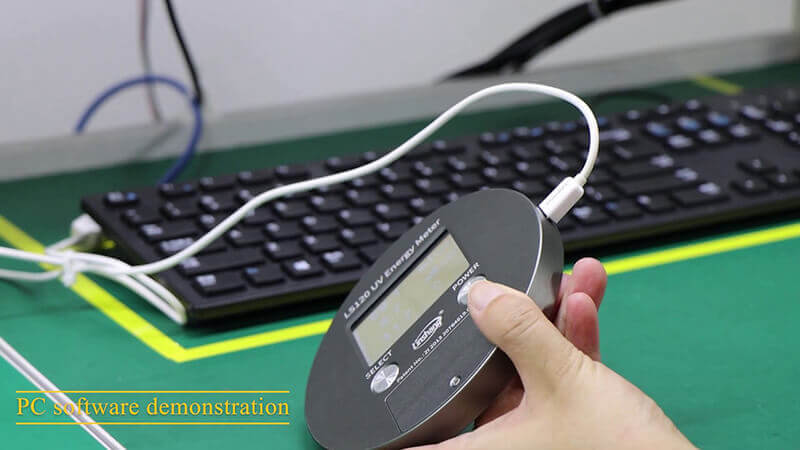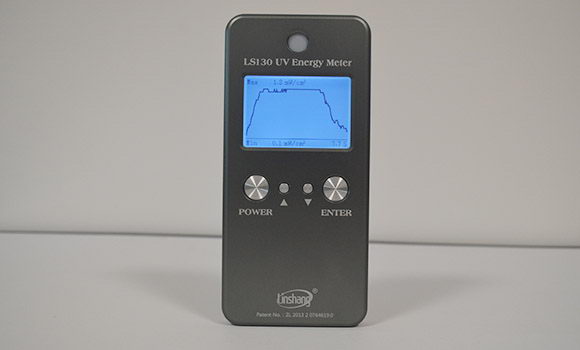How does a High Pressure Mercury Lamp Work?
Lamp that generates light in the high-pressure mercury vapor contained in a transparent bulb due to a discharge generated between two electrodes. In some versions, phosphors are applied, which convert part of the ultraviolet light emitted together with visible light into visible light to improve the color quality of the light. How to measure its UV energy is concerned by many people. Please watch the video below to see how to measure the UV energy of the high pressure mercury lamp.
1. How does a high pressure mercury lamp work?
In the discharge state, the mercury vapor pressure inside the high-pressure mercury lamp can reach 51 to 507 kPa, hence the name. The center discharge tube of the high-pressure mercury lamp is made of quartz glass. The tube is filled with mercury and argon. The main motor pole is made of tungsten and filled with alkaline earth metal oxide electron-emitting substances. Between the electrode and the quartz glass, a non-matching gas-tight joint is formed with a molybdenum foil. Coating phosphor inside the shell can improve the light efficiency of the high-pressure mercury lamp. The fluorescent powder can supplement the insufficient color spectrum of the high-pressure mercury lamp.
At the initial start, it is the discharge of low-pressure mercury vapor and argon, which radiates a blue glow. At this time, the lamp voltage is low and the discharge current is large. With the heat generated by the discharge, the mercury vapor in the tube is boosted and the arc begins to shrink and ionize. Excited to form a collision between electrons, atoms and ions in the discharge tube to emit light. At the time of discharge, the resonance line with a wavelength of 253.7 nm is absorbed. As the mercury vapor in the lamp further increases, the intensity of the visible spectrum line gradually increases. The main radiation lines are the visible spectrum lines of 404.7 nm, 435.8 nm, 546.1 nm and 577.0-579.0 nm. The high-pressure mercury lamp takes 4-10 minutes from startup to normal work.
2. How to measure UV energy of high pressure mercury lamp?
High pressure mercury lamp is also called UV curing lamp, with a spectral range between 350nm-450nm, such as 253.7nm, 303nm, 334nm, 365nm, 366.3nm, of which the wavelengths of 365nm and 366.3nm have great advantages. UV energy meter (UV power puck) is mainly aimed at this spectral band when measuring the energy of UV curing. This is valuable for the UV curing process because many photoinitiators have strong absorption in this wavelength region.
UV high pressure mercury lamp is mainly used for ink curing, photo printing, flexible packaging color printing, paper glazing, bamboo and wood flooring, paint coatings, printed circuit boards made of iron cans. It is a standard lamp for ultraviolet curing. It has a large heat and needs to be cooled with air or water, but it has high power and is suitable for light curing coatings and ink coating lines that require fast curing rates.
If you want to measure the UV curing time and radiation intensity of the ultraviolet high pressure mercury lamp to complete the curing work, you need to use an UV energy meter dedicated to mercury lamps, UV lamps with different wavelengths must use the corresponding wavelength of UV puck to perform the ultraviolet energy measurement.
The UV energy meter Linshang LS120, LS130 and LS131 are developed based on the spectral characteristics of the high-pressure mercury lamp, which mainly measures the ultraviolet intensity and UV energy of the mercury lamp at 365nm.
3. High pressure mercury lamp features
Simple structure, low cost and low maintenance cost.
Longer life than ordinary lamps, saving electricity and economy.
White light and long light effect.
The start-up time is relatively long, usually 4-10 minutes.
The second start needs to wait for the lamp body to cool.
Illumination of squares and streets.
4. High pressure mercury lamps classification
(1) Fluorescent high-pressure mercury lamp
Fluorescent high-pressure mercury lamp uses an extra layer of phosphor powder on the shell to convert invisible light into visible light, which improves the light efficiency and makes the light brighter. It is most suitable for outdoor, street, factory and other open places.
(2) Self-ballasted high-pressure mercury lamp
The self-ballasted high-pressure mercury lamp is a tungsten ball enclosed in the lamp housing, which becomes a ballast for the high-pressure mercury lamp, which increases the brightness and life of the lamp. This kind of light has low efficiency and is often used indoors.
(3)Ultra high pressure mercury lamp
Ultra-high pressure mercury lamps are often used in optical instruments and platemaking. When the lamp is turned on, the mercury vapor pressure can reach 10133 ~ 20265Kpa and the luminous brightness is strong. Many liquid crystal projectors on the market use ultra-high pressure mercury lamps.
(4) Ultraviolet high pressure mercury lamp
Ultraviolet high-pressure mercury lamp can emit visible light and ultraviolet light. This kind of high-pressure mercury lamp is widely used in blueprinting, health care, flaw detection and other tasks. It is not used for daily lighting.
Ultraviolet high pressure mercury lamps are high intensity gas discharge lamps. Mercury is evaporated by the use of a bipolar arc discharge. The principle is named after adding a certain amount of mercury inside the lamp. The inside of a mercury lamp is vacuum condition. Under the high-voltage excitation of the power supply, the mercury inside the lamp tube is atomized to emit ultraviolet light, thereby generating spectral lines characteristic of mercury vapor.


